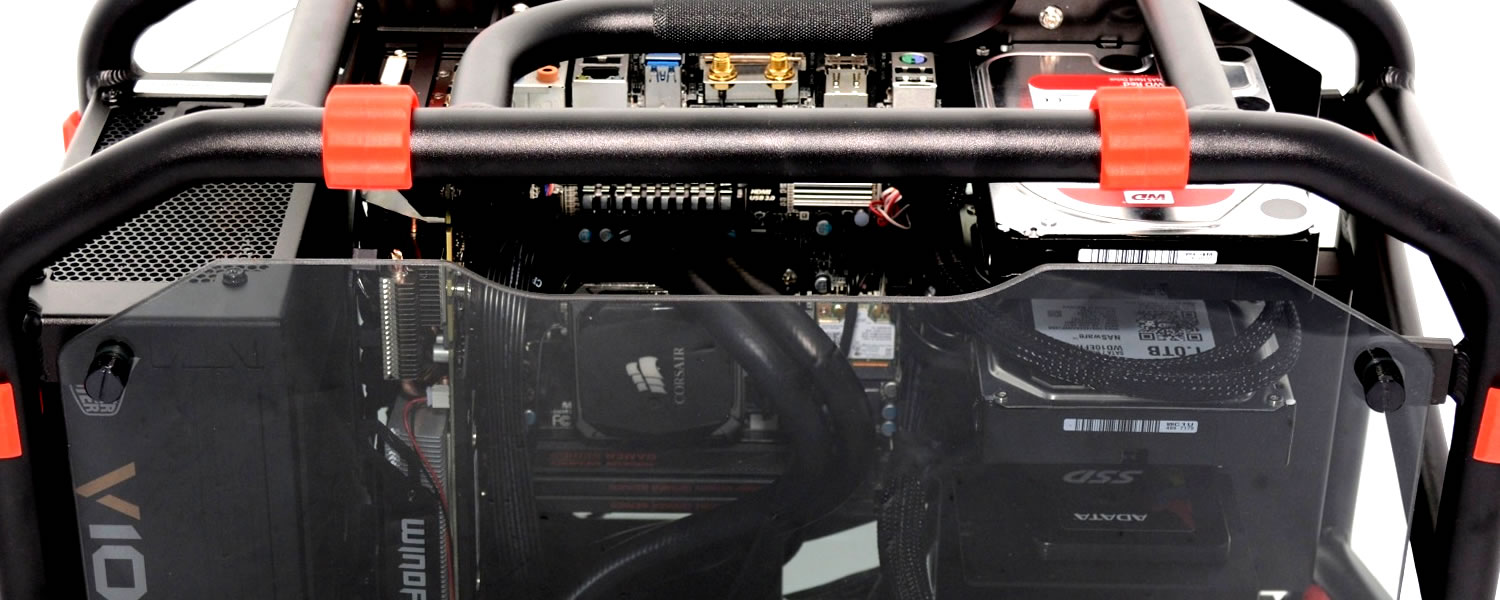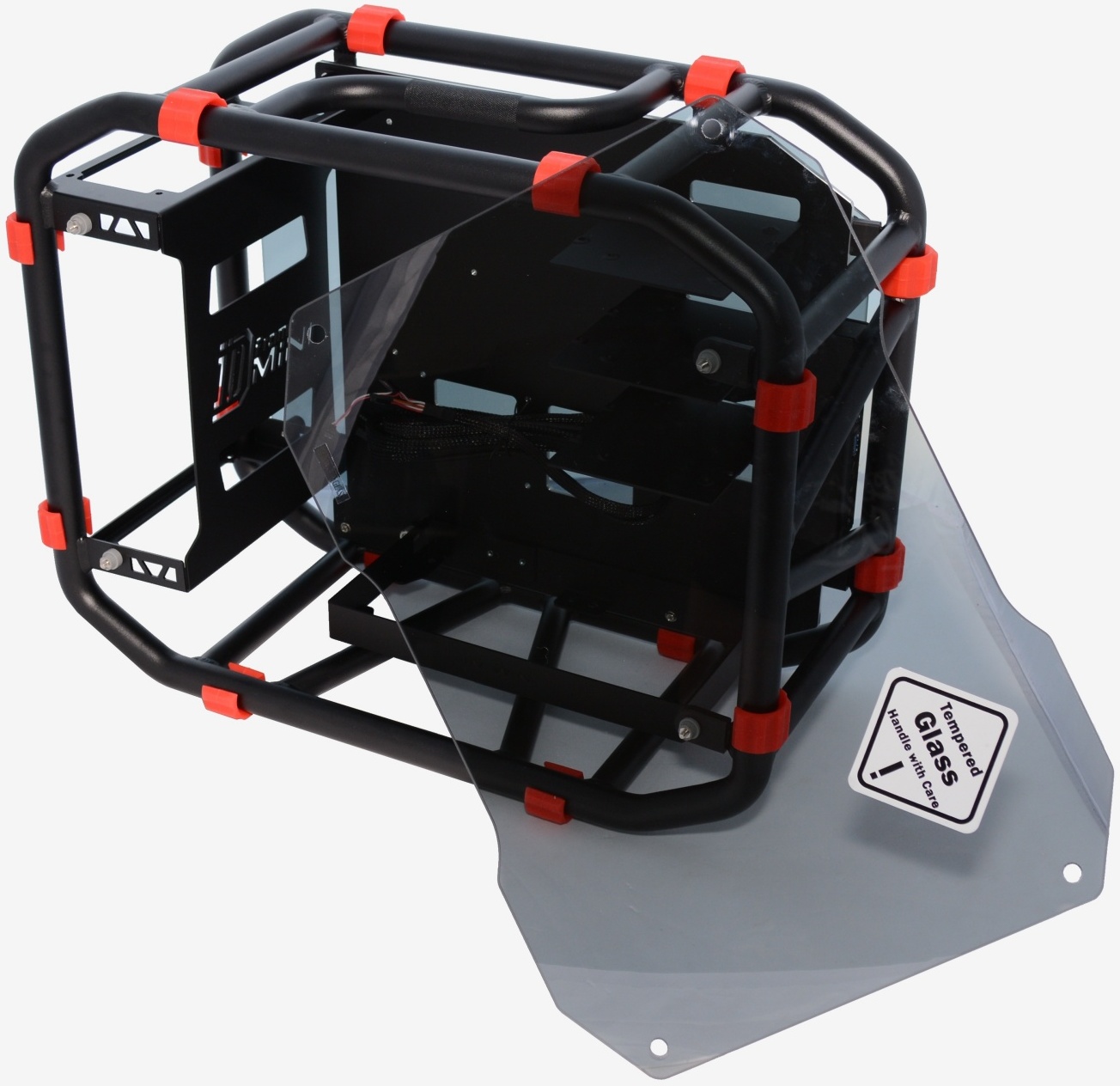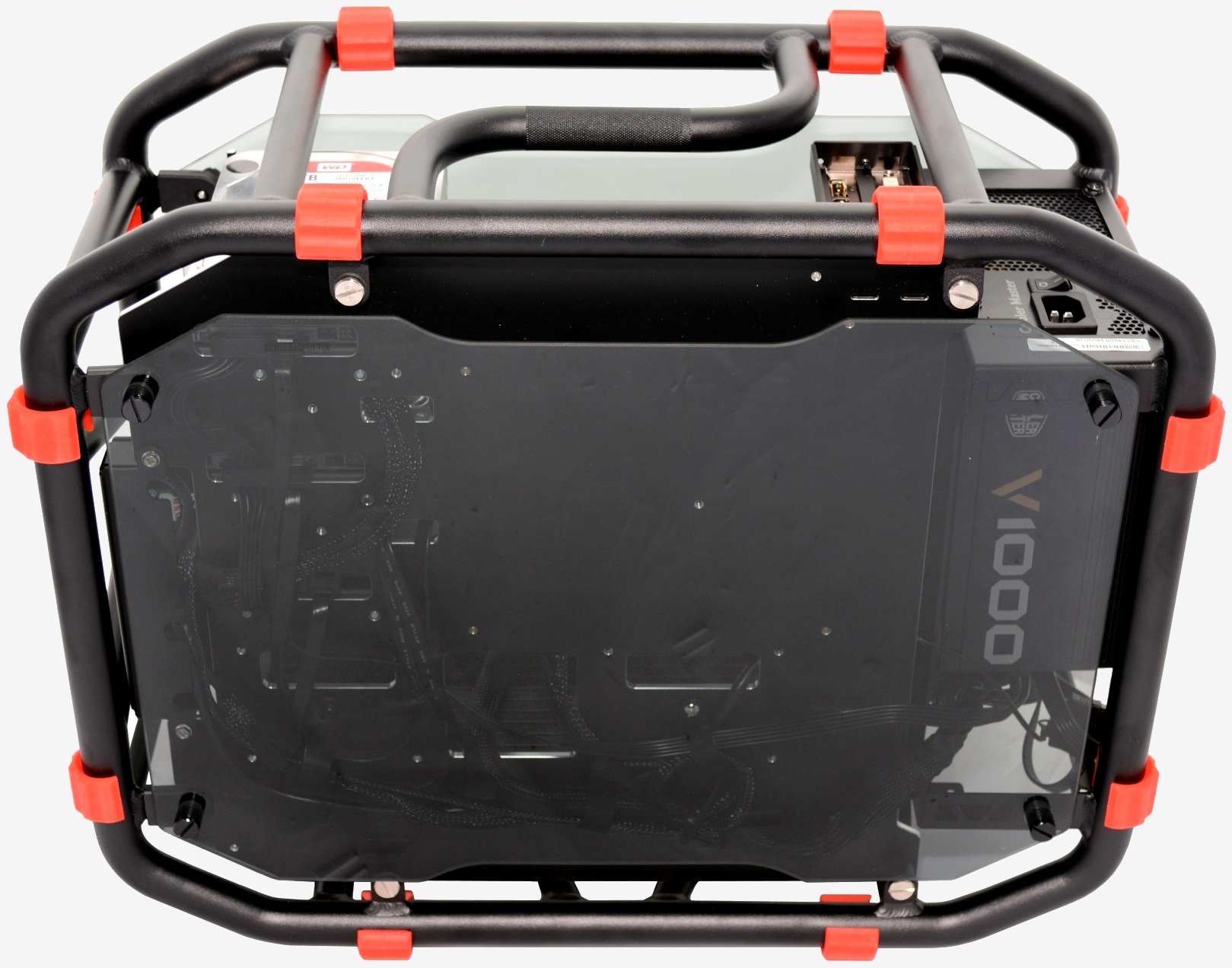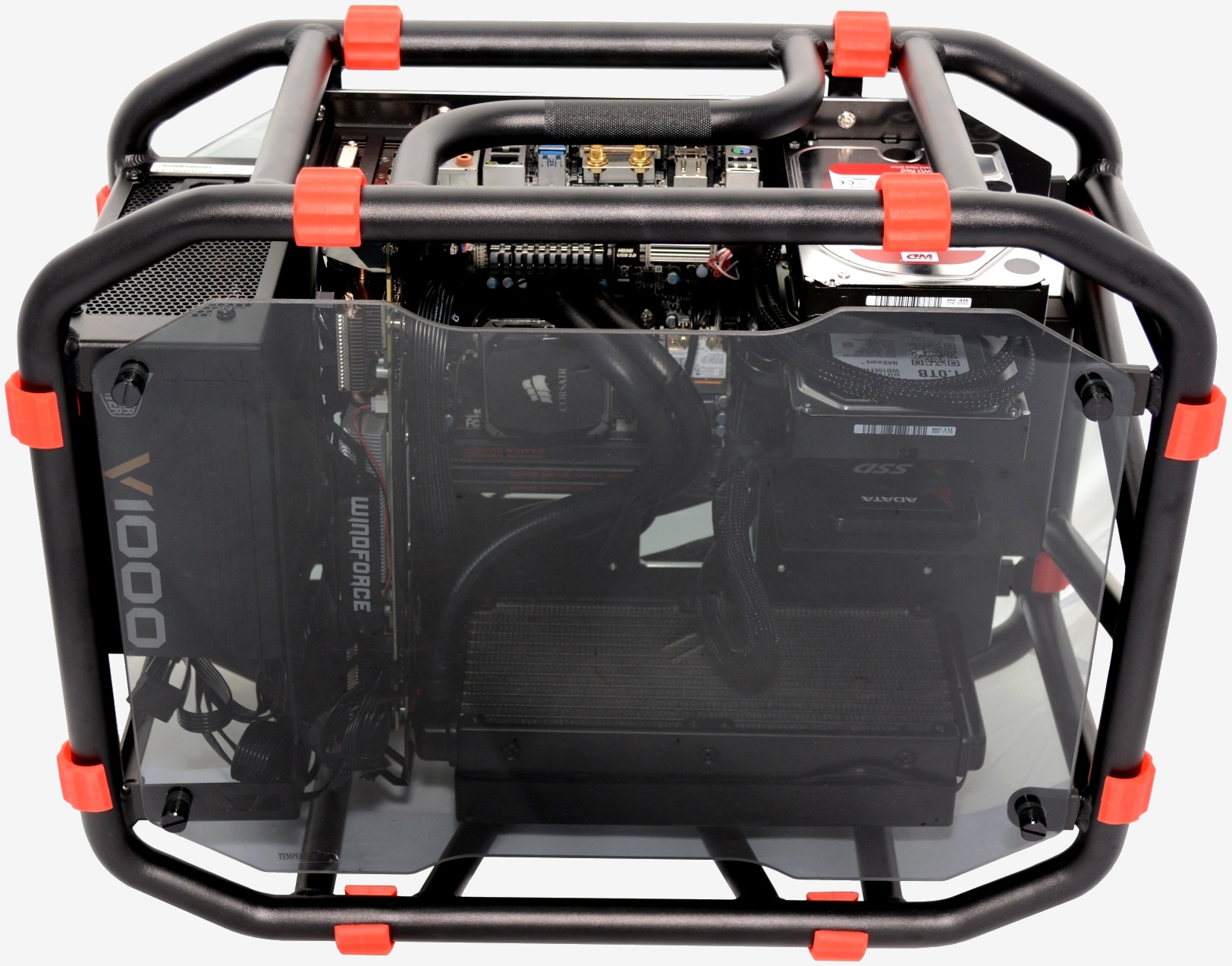Putting Stuff in the D-Frame Mini
With the ability to install full-length graphics cards, power supplies and coolers, we didn't hold back when it came to our D-Frame Mini build.
Often Mini-ITX builds are difficult as there is limited room to work and there is usually a particular order in which hardware needs to be installed. This can make it a pain to change parts as you often have to remove multiple components before getting to what you're after.
With the open air D-Frame Mini, this isn't an issue. Installing hardware is easy – even more so than working with some mid-towers.
The open-air design also makes it extremely simple to route cables, but you'll still want to take your time as wires are highly visible from all angles.
In Win has constructed the motherboard tray from a single piece of thick aluminum that has beautifully routed holes for cable management. Surprisingly, despite all the cable management holes and the extra thick aluminum, In Win didn't include a CPU socket cut-out to make after-market cooler installation possible without removing the motherboard first.
Complementing the abundance of cable management support in the motherboard tray, there is 3cm of space behind the motherboard. In Win has also included an assortment of cable clamps that can be fixed to various locations and really help tidy things up.
The D-Frame Mini doesn't come with any fans but you'll likely at least have one on your CPU cooler and that might actually be enough in the best of situations, though many users can expect to require at least one more. Easy airflow is one of the biggest perks associated with open-air cases such as the D-Frame Mini, though they aren't without some drawbacks.
For instance, dust can be a major issue and there's no point in using dust filters on fans with such an open construction. Additionally, even if you don't install any chassis fans, noise from the CPU and GPU coolers is much more audible with open enclosures.
The 240mm radiator support is an impressive feature, particularly as it doesn't limit the GPU length. For our build, we kept the Core i7-4970K cool with Corsair's H100i, which fit snug into the bottom of the case. For graphics, we installed the extra-long Gigabyte G1 Gaming GTX 980 and with its large backplate it fit just right.
With everything installed we connected all the cables. Since the motherboard is mounted horizontally (sideways), the cables all connect at the top of the case and we found that this layout made it easy to hide all the cables for a clean appearance.







